
Save this storySave this storySave this storySave this story
Hengam Island is a tropical isle off the coast of Iran, at the southern end of the Persian Gulf. Just fourteen square miles, it has three villages with only a few hundred families. The island has long been recognized for its geostrategic importance. Nearchus, the Greek explorer and admiral of Alexander the Great’s naval fleet, referenced it when he navigated the Gulf in the fourth century B.C. Hengam was occupied by the Portuguese military in the sixteenth and seventeenth centuries. In 1913, Britain established a naval base there. Since the late nineteen-forties, tanker ships have skirted Hengam en route to the Strait of Hormuz, a global choke point about thirty-seven miles away. A fifth of the world’s supply of oil and natural gas passes through it each day.
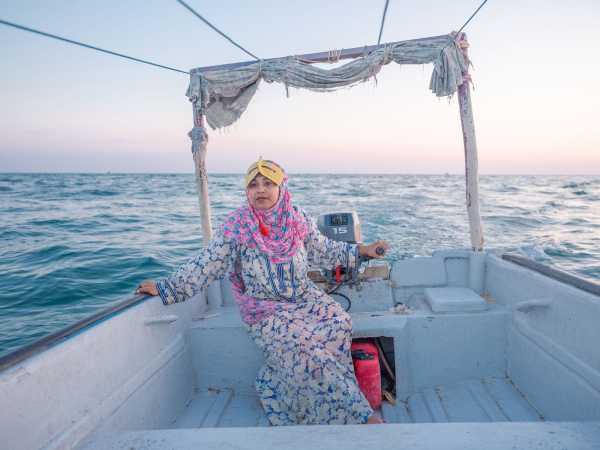
Khadijeh Ghodsinejad is the youngest female fisher in the community. She began accompanying her mother on fishing trips in a rowboat when she was four or five.
Today, Hengam may be most noted for its so-called daughters of the sea, the only fisherwomen in Iran—and probably in the eight other countries around the Gulf. Forough Alaei, a law student turned photojournalist, spent years documenting the women as they set off at dawn, without men and often alone, to ply the Gulf waters. In small, weathered boats, they fish for barracuda and spangled emperor, which have vibrant blue markings that change color when they are frightened or caught. Both fish are famed for their sharp teeth and ferocious bites.
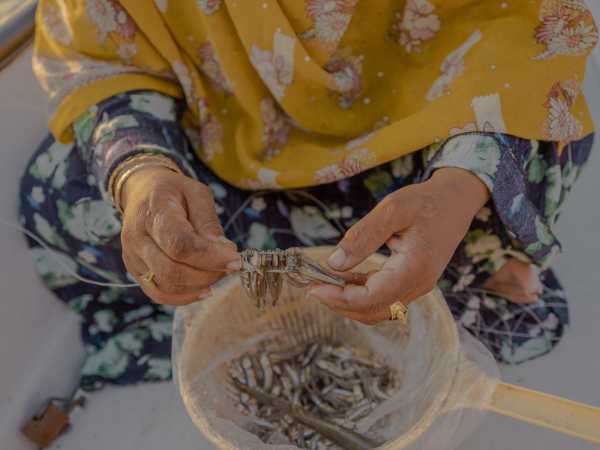
Preparing fishing hooks for the day.

A day’s catch.
The women’s clothing is as vibrant as their catch. They wear full-length burqas, a style more common in Afghanistan and the Arab sheikhdoms than in Iran. Burqas are often a dark, solid color. Theirs, though, are sewn from summery blue, orange, and pink floral prints. The history of their attire goes beyond Islamic modesty, Alaei told me. According to one narrative, women masked their faces when the Portuguese, and later the British, occupied the island, to try to prevent harassment—or worse. Some burqas, as stated by local lore, included ersatz mustaches, to further discourage threats from foreign men. Burqas also provide women protection from long days under a punishing sun.

Ghodsinejad goes fishing several days a week. She uses a portion of her catch at her restaurant, and sells the remainder through her Instagram page to customers across Iran.
Hengam’s fisherwomen, often the primary breadwinners in their families, are a determined lot. Alaei photographed Kobra Arbabi, who has fished for a quarter century, as she napped in a burqa with a fishing line, held low in the water by weights, dangling from her big toe. Many men on Hengam are involved in maritime trade or deep-sea fishing and are gone for long periods. The women fish to literally put food on the table or to generate income by selling their catch at local markets.

After long hours on the water, a fisher grew weary and tied the fishing line to her toe, so that she could recline.
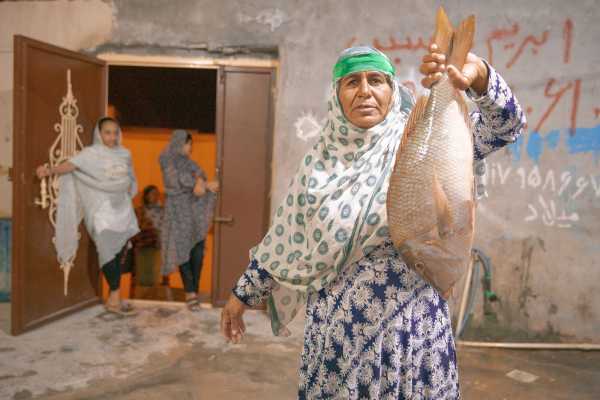
Hava Arbabi, a native of Hengam Island, has been fishing for thirty years. Nowadays, she spends most of her time at her booth, as knee pain prevents her from working on the water.
They have worked in defiance of Iran’s labor laws, which stipulate that “women shall not be employed to perform dangerous, arduous or harmful work.” For decades, the government failed to grant fishing licenses to women, depriving them of fuel subsidies and the right to insure their boats. After the women protested, the Fisheries Department agreed two years ago to issue licenses, though each had to be shared by two women, even if they had their own vessels.
Iran’s theocracy is strident about its priorities. “The most important role that a woman can play at any level of science, literacy, information, research, and spirituality is the role of a mother and wife,” Supreme Leader Ayatollah Ali Khamenei has decreed. “This is more important than all her other works.” Within a family, a father or husband is also able to prevent his daughter or wife from working a job that he deems beneath the family’s dignity. Last year, the World Economic Forum’s report on the global gender gap ranked the Islamic Republic among the bottom four in its survey of a hundred and forty-six countries.
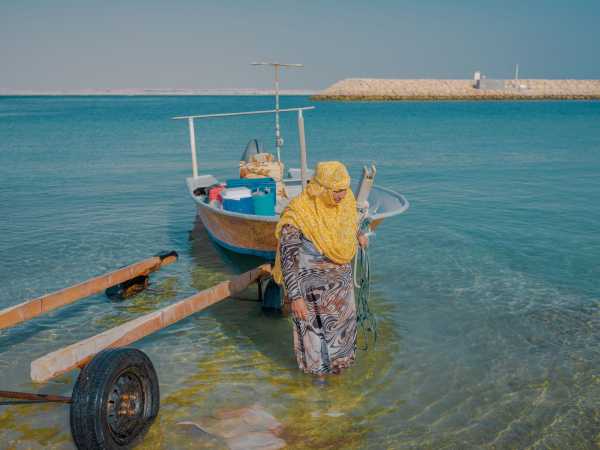
Sakineh Karimdadi has been fishing since her twenties.
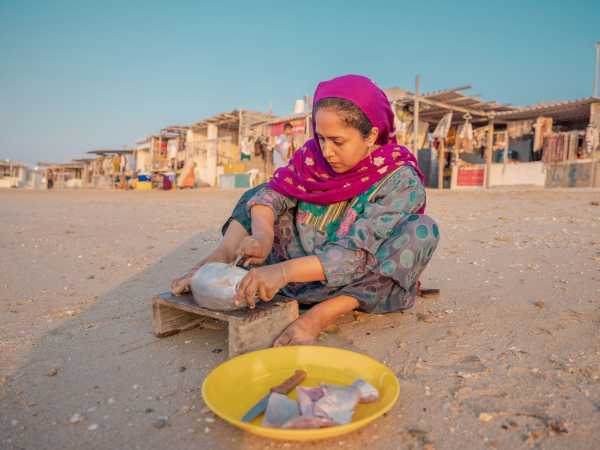
Ghodsinejad cleaning fish in front of her seaside booth.
Alaei, whose larger body of work captures girls and women challenging taboos in Iran, was inspired by the fisherwomen. “It was amazing to see women who have a critical role in the economy of the family,” Alaei told me. “The rate of women in the labor force in Iran is less than twenty per cent. But on a really traditional island women were a great part of the economy.”
Modernity is seeping into remote Hengam. Some fisherwomen have objected to being photographed—and put on social media—by tourists, who are vacationing on the island in increasing numbers. But at least one fisherwoman is using social media to her advantage. Khadijeh Ghodsinejad, the island’s youngest fisherwoman, and the mother of a toddler, offers her catch nationwide on the Instagram account Khajoou. (Fish sold the typical way, through an intermediary, go for between fifty and eighty U.S. cents a pound—half of what can be made selling directly to consumers.) She’s amassed more than a hundred thousand followers. With her husband, Kayhan, she also operates a small hostel and café where they cook her fresh catch.
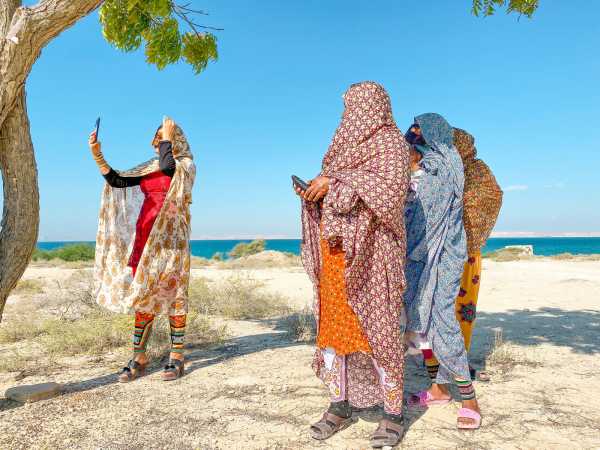
A group of women pose for a selfie before work.
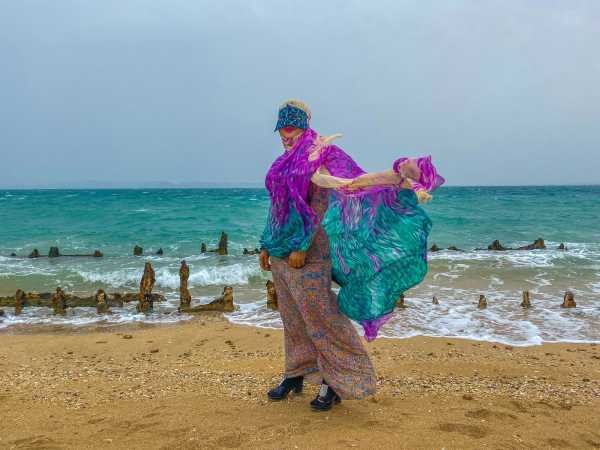
Marziyeh Arbabi is a chef at a local restaurant.
As outsiders visit more frequently and Hengam becomes more connected to the rest of Iran, the daughters of the sea have declined in number. Today, around a dozen are still fishing. The younger generation want more education, secure office jobs, the attractions of urban life, and the promise of pensions, not demanding physical work dependent on fickle weather and the unpredictable sea. Alaei’s photographs also capture Hengam’s youth wearing matte red lipstick reminiscent of Taylor Swift, taking selfies on cellphones, smoking hookahs, and wearing masks in red and bright yellow, some bedazzled. She worries that Hengam’s current fisherwomen may be its last.
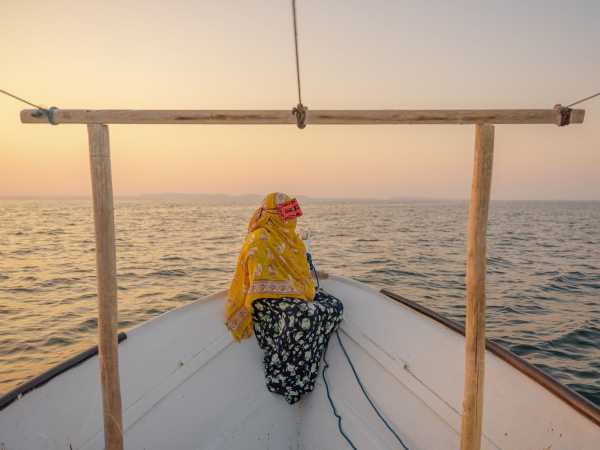
Kobra Arbabi at the end of a long day.
Sourse: newyorker.com







